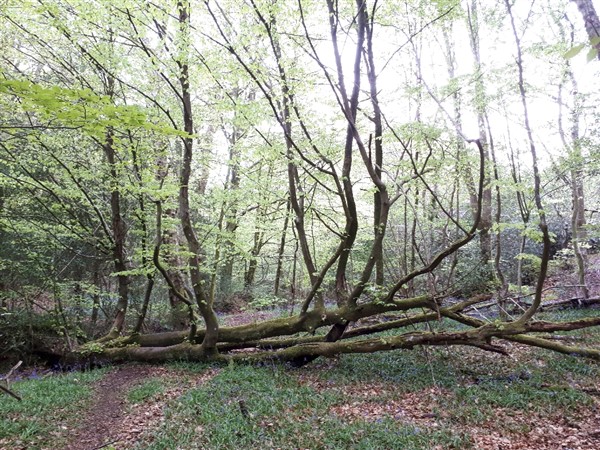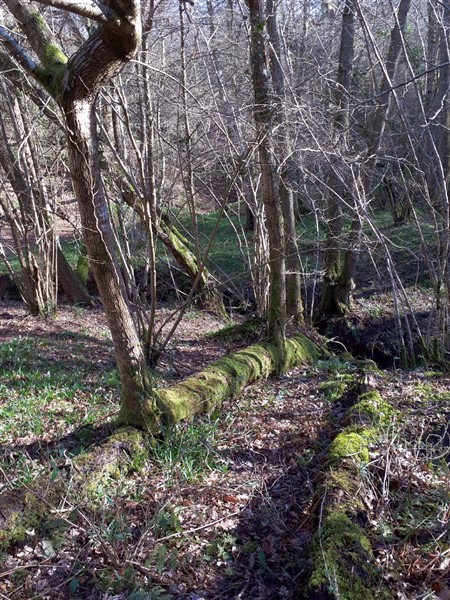A layering tree is a type of ‘Phoenix tree’ that winds have pushed over, pulling part of its root system out of the ground. But, importantly, some of the root system is still attached and remains connected to the undergound fungal network, continuing to extract water and nutrients from the ground for the tree’s benefit.
The upended rootplate also has a high ecological value as the soil is very important to mining bees. Other plants and lichens can also colonise this habitat and sometimes new tree growth can form here, like a coppice!
Under these conditions, branches that were previously horizontal find themselves pointing up and develop apical dominance. They start to behave like the old ‘leader’ of the tree (once at the top of the tree but now unfortunately in a horizontal orientation) and will continue to grow. That is, as long as someone doesn’t saw up the tree and remove it in a misguided effort to ‘tidy up’! (There’s more information about this in the page on Decaying Wood).

(image taken in 2019)
Over many years, roots can be formed on the under-surface of the trunk where it contacts the ground, the leaders establish themselves as viable trees, and then the trunk in between them rots away leaving new clones of the original tree at some distance from the old tree’s location. Where the Tree Warden grew up in the Forewood in Crowhurst, East Sussex, old woodsmen would call this ‘walking trees’. Trees ‘walk’ incredibly slowly!

Image Credits: (c) Doug Edworthy